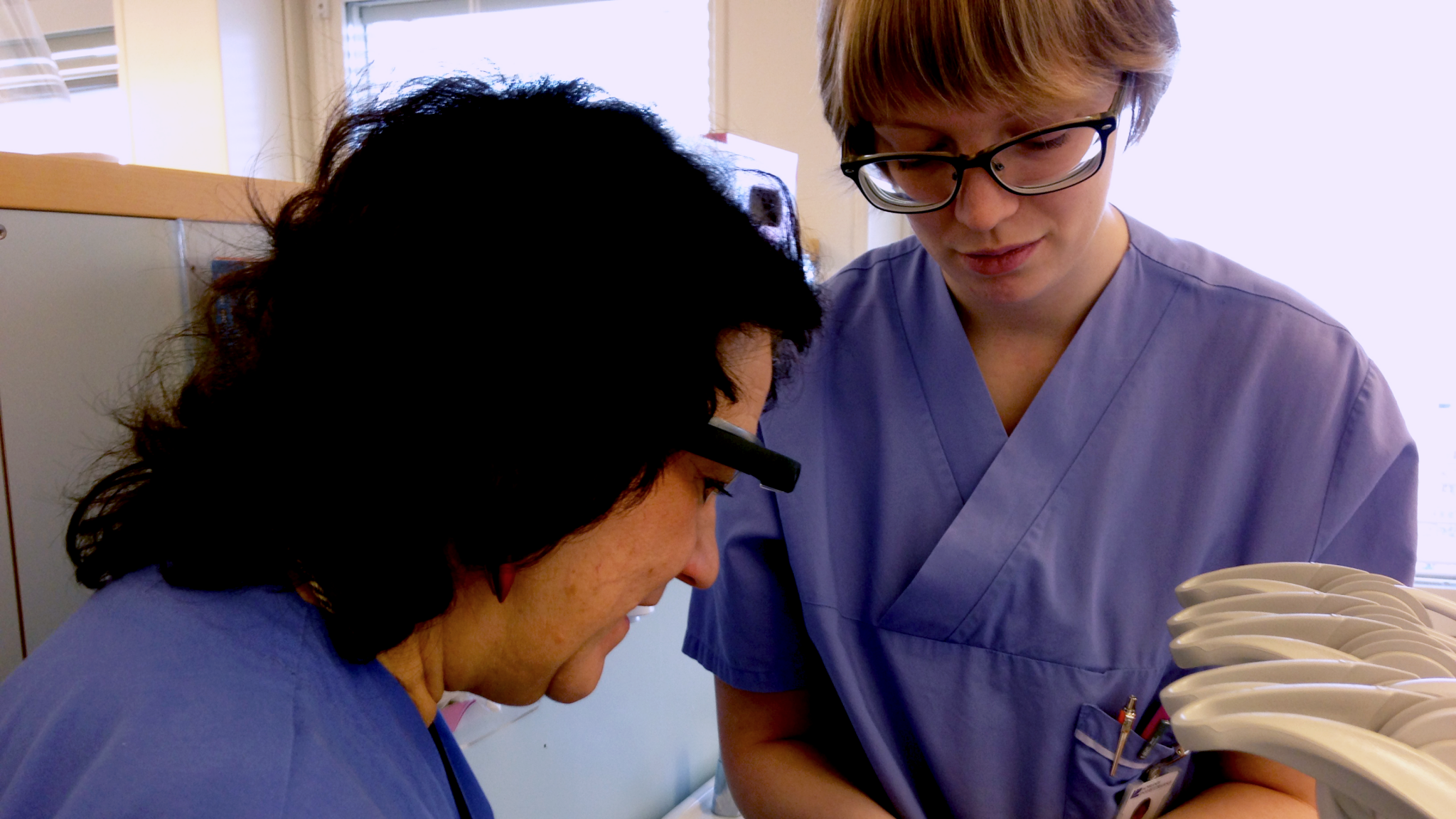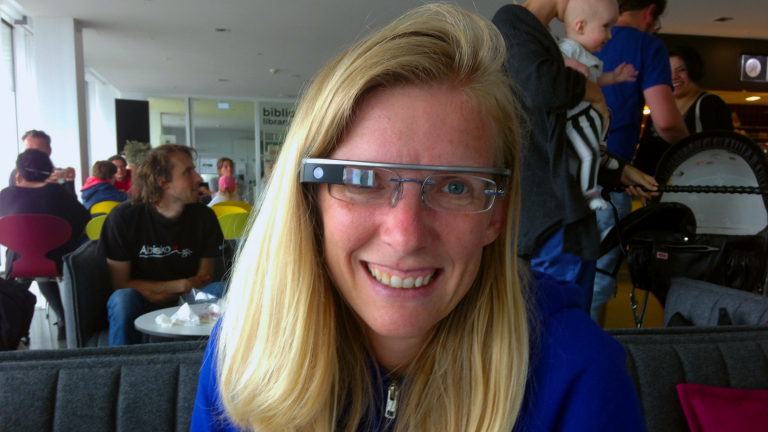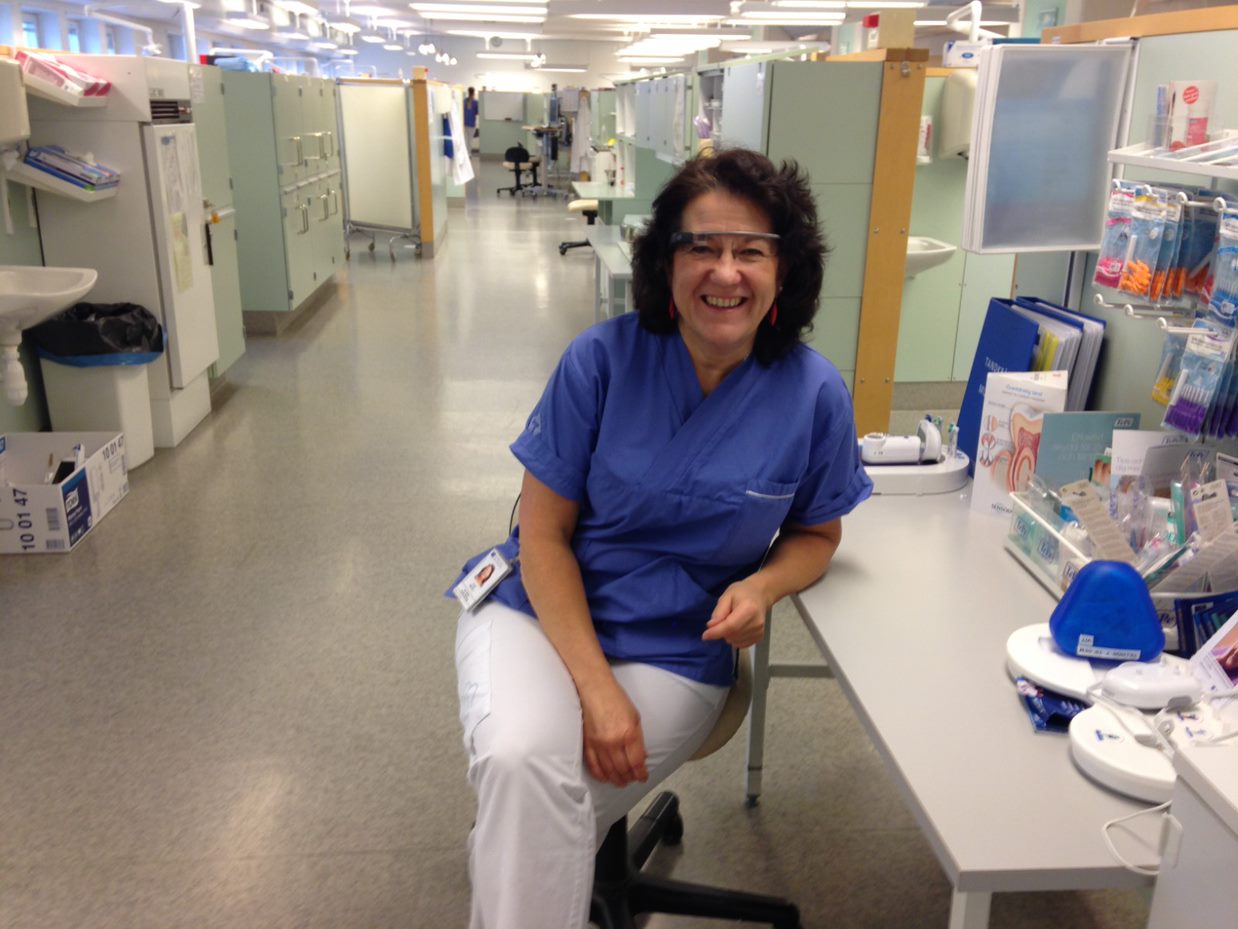Hands-free technology: Exploring the possibilities of ‘smart’ glasses
Contact: Brian Consiglio, 573-882-9144, consigliob@missouri.edu
Technology is always evolving, and Isa Jahnke is on a research mission to better harness ways for emerging technology to help learners in an educational or workplace setting. As an associate professor in the MU College of Education, she worked with Eva Mårell-Olsson, her former colleague, friend and associate professor at Umeå University in Sweden, to study the benefits of students using smart glasses in a dentistry training program.
 Dental students learn from their teacher about the benefits of Google Glass, a brand of smart glasses that allow the user to take pictures and communicate with others online via voice commands.
Dental students learn from their teacher about the benefits of Google Glass, a brand of smart glasses that allow the user to take pictures and communicate with others online via voice commands.
To explore the technology, 18 students enrolled in Umeå University’s dentistry program used Google Glass, a brand of smart glasses that allow the user to take pictures and communicate with others online via voice commands, during the course of their training.
 Isa Jahnke wearing Google Glass
Isa Jahnke wearing Google Glass
“What makes this different from other technologies is the hands-free part,” Jahnke said. “By being able to communicate via voice commands, both of your hands are free for working with the patients or doing other things, and dentists obviously need to have both hands available when examining their patients’ teeth.”

Mårell-Olsson explained that before the smart glasses were used, the dentists-in-training would traditionally write questions for their instructor or requests for assistance on a large whiteboard in a nearby room. With the new smart glasses, the students were able to send those same messages to their instructor via voice commands or with pictures, which streamlined communication, allowed the instructor to prioritize which students to help, and ultimately improved health outcomes for the patients receiving the care from the student dentists.
“The main three benefits we found in the workplace from using the smart glasses were faster, more efficient communication; an improvement in the quality of coordination and organization; and the ability to express problems using photos instead of just words,” Mårell-Olsson said. “By disrupting old routines and challenging old ways of thinking, new technologies can bring new energy to workplace learning and create new ways of communicating that is beneficial to learners.”
 Use of the smart glasses in the dentistry training program resulted in faster, more efficient communication; an improvement in the quality of coordination and organization; and the ability to express problems using photos.
Use of the smart glasses in the dentistry training program resulted in faster, more efficient communication; an improvement in the quality of coordination and organization; and the ability to express problems using photos.
Jahnke added that the smart glasses are an example of how educators can use new technology to actively engage students in the learning process, challenging the traditional view of students as simply consumers of information.
“Research has shown that students do not learn as much by just sitting and listening to a lecture,” Jahnke said. “The students need to be more engaged, so we can use technology to change how we educate students to help them take more ownership in the learning process.”
Outside of dentist offices, Jahnke sees other industries where the smart glasses could be beneficial to both teachers and learners.
“Many manufacturing companies have apprenticeship programs for training the new employees,” Jahnke said. “Whether it’s mechanics using tools to fix cars, technicians examining airplanes or contractors building furniture, smart glasses can be used to communicate and stay organized. The technology itself is not the solution, but rather a tool for enhancing a positive learning experience.”
“Wearable technology in a dentistry study program: Potential and challenges of smart glasses for learning at the workplace” was published in Perspectives on Wearable Enhanced Learning (WELL).